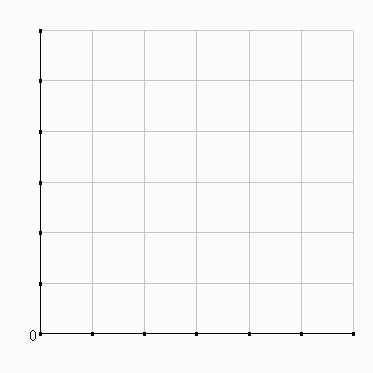Q = boKbKLbL , 0 < bK, bL
Q = 18 K1/2L1/2
K = 4 => Q = 36L1/2
APL = 36L1/2/L =
36/L1/2
MPL =
dQ/dL
= 1/2(36L-1/2) = 18/L1/2
| L | Q | APL=36/L1/2 | MPL= 18/L1/2 |
| 1 | |||
| 4 | |||
| 9 |

|
Monday, March 04, 2013 |
III. Theory of the firm:
Production and Costs
A.
Production theory
1. Production in
the short run
Diminishing returns
Behavior of productivity curves depicted above is
thought to be quite general:
Law of diminishing returns: if
one input is increased while the others are held constant, the marginal and average
productivity of the variable input will eventually decline.
DMR = diminishing marginal returns
DAR = diminishing average returns
Assumes
(1) a given technology
(2) other inputs fixed.
| Ex: Cobb-Douglas production function:
Q = boKbKLbL , 0 < bK, bL Q = 18 K1/2L1/2 APL = 36L1/2/L =
36/L1/2
|
 |
||||||||||||||||
Note from formulas:
--L in denominator: APL and MPL fall as L rises.
--Therefore, for all L, this C-D production function has DMR
and DAR.
(Verify that it will not have DMR and DAR if exponent on L
exceeds 1.)
2. Production in the long run
Learning objectives: Draw and interpret isoquants, and explain their properties. Explain the meaning, geometry and formula for the marginal rate of technical substitution (MRTS).
Now all inputs can be varied--here, both K and L
a. Resource combinations and isoquants
An isoquant is a curve showing all the various efficient input combinations capable of producing a specified amount of output (Qo).
| The utility/production parallel: | |
| U = U(X,Y,...) | Q= Q(K,L,...) |
| U is not quantifiable, so we never compute its value | Q IS quantifiable, so we do compute it |
| Constant U => indiff. curves | Constant Q => isoquants |
| Oxy headbands Note the difference vs. U's: we attach an actual Q-level to each isoquant. |
 |
b. The marginal rate of technical substitution (MRTS)
| Consider 2 points on Qo: L K Q a 4 10 100 b 5 7 100 From a to b: (1) MRTS meaning: the maximum amount of input Y that a firm is able to give up for another unit of input X without losing any output |
 |
Don't leave the "T" out--it distinguishes
inputs from outputs:
MRS tells you how much a good is worth to a consumer
MRTS tells you how much an input is worth to producer
(2) MRTS geometry: the size of the slope of an
isoquant.
DY/DX|Qo =
DK/DL
But what does that actually tell us about
the production process?
Note from the example, moving from a to b:
we see that if we increase L by 1 unit, the move back to Q1 (down) tells us the
amount of K we can substitute for and still produce the initial Q.
Size of slope Ex:
DK/DL = 3
means that the firm could exchange 3K for 1L without losing any output since the
1L gained is just as useful as the 3K lost.
Here: MRTS = 3 => the firm
is able to give up 3K for 1L and still produce Q1
(3) MRTS formula
It turns out that this ability to substitute L for K is related to the comparative productivities of the two inputs.
Ex: Headband productivity: MPL = 6; MPK = 2 headbands
DL=+1 --> DQ= 6 · +1 = +6
DK=-3 -->
DQ = 2 · -3 = -6
Net DQ=0
In general:
|
 |
||||||||||||||||||||||||||||||
Isoquants are convex to the origin because of a diminishing MRTS.
| Consider 2 points on Qo (b with
more L and less K than a): ? Why would you expect L to be more productive at point a than point b? Convexity rests on the law of diminishing marginal returns Convexity => L becomes progressively less effective as a substitute for K |
 |
Example of diminishing MRTS:
Cobb-Douglas production function:
Q = BoLBLKBK
MPL BL(BoLBL-1KBK)
BL
K
--- = ------------- = --- ---
MPK BK(BoLBLKBK-1)
BK
L
| Example: Q = 8L1/2K1 ? MRTS formula?
|
 |
|||||||||||||||